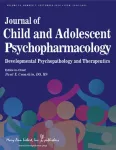(Press-News.org) Between 1990 and 2021, the number of people who had a new stroke (up by 70%), died from a stroke (up by 44%), and stroke-related health loss (up by 32%), has risen substantially worldwide.
Stroke is highly preventable, with 84% of the stroke burden in 2021 attributable to 23 modifiable risk factors, including air pollution, excess body weight, high blood pressure, smoking, and physical inactivity—presenting a public health challenge and an opportunity for action.
Notably, the contribution of high temperatures to poor health and early death due to stroke has risen 72% since 1990, a trend likely to increase in the future—underscoring the impact of environmental factors on the growing stroke burden.
For the first time, the study reveals the high contribution (on a par with smoking) of particulate matter air pollution to subarachnoid haemorrhage (fatal brain bleed).
Effective, accessible, and affordable measures to improve stroke surveillance, prevention (with the emphasis on managing blood pressure, lifestyle, and environmental factors), acute care, and rehabilitation need to be urgently implemented across all countries to reduce the stroke burden.
**For regional and individual-level country data, see Table 1 in the Article and appendix table 11**
Although stroke is highly preventable and treatable, there has been a rapid rise in the global stroke burden between 1990 and 2021, due to both population growth and the rise of aging populations worldwide, as well as a substantial increase in people’s exposure to environmental and behavioural risk factors. The findings of this major new analysis from the Global Burden of Disease, Injuries, and Risk Factors Study (GBD) are published in The Lancet Neurology journal and being presented at the World Stroke Congress in Abu Dhabi in October 2024 [1].
Globally, the number of people having a new stroke rose to 11.9 million in 2021 (up by 70% since 1990), stroke survivors rose to 93.8 million (up by 86%), and stroke-related deaths rose to 7.3 million (up by 44%), making the condition the third leading cause of death worldwide (after ischaemic heart disease and COVID-19). More than three-quarters of those affected by strokes live in low- and middle-income countries (LMICs).
Additionally, estimates suggest that worldwide, the overall amount of disability, illness, and early death—a measurement known as disability-adjusted life years (DALYs)—lost to stroke increased by 32% between 1990 and 2021, rising from around 121.4 million years of healthy life lost in 1990 to 160.5 million years in 2021, making stroke the fourth leading cause of health loss worldwide after COVID-19, ischaemic heart disease, and neonatal disorders.
The burden of stroke is increasing in large part due to both population growth and the rise of aging populations worldwide, but also due to increasing contributions from preventable environmental, metabolic, and behavioural risk factors. Between 1990 and 2021, the global stroke burden linked to high body mass index (BMI; up by 88%), high temperatures (up 72%), high blood sugar (up 32%), diet high in sugar-sweetened drinks (up 23%), low physical activity (up 11%), high systolic blood pressure (up 7%), and diet low in omega-6 polyunsaturated fatty acids (up 5%) increased substantially.
However, if the impact of demographics is removed through age-standardisation (to allow comparisons between countries and over time), there has been a trend towards lower rates (age-standardised per 100,000 population) of incidence (down by 22%), prevalence (down 8%), deaths (down 39%), and DALYs (down 39%) worldwide, and across virtually all country income levels, since 1990. But since 2015, improvements in global incidence rates have stagnated, while age-standardised rates of stroke incidence, death, prevalence and DALYs have got worse in Southeast Asia, East Asia, Oceania, and in people younger than 70 years.
Lead author Professor Valery L Feigin from Auckland University of Technology, New Zealand, an affiliate professor at the Institute for Health Metrics and Evaluation (IHME) at the University of Washington, USA, said: “The global growth of the number of people who develop stroke, and died from or remain disabled by stroke is growing fast, strongly suggesting that currently used stroke prevention strategies are not sufficiently effective. New, proven effective population-wide and motivational individual prevention strategies that could be applied to all people at risk of having a stroke, regardless of the level of risk, as recommended in the recent Lancet Neurology Commission on Stroke [4] should be implemented across the globe urgently.”
The current study builds on previous GBD analyses [2] to provide the most up-to-date and comprehensive analysis of stroke burden and risk factor estimates in countries on a global scale between 1990 and 2021, to help guide health-planning, prevention, and resource allocation.
Fast-growing burden of uncontrolled risk factors, mostly affecting LMICs
The study reveals striking differences in the overall stroke burden (as measured by age-standardised incidence, prevalence, death and DALY rates) between world regions and national income levels in 2021. In high-income North America and Australasia, and middle-income Latin America—regions with the lowest stroke burden—the age-standardised rates of incidence and prevalence were lowest in New Zealand (67.8 and 707.4 per 100,000 people respectively), death rates lowest in Canada (20.4 per 100,000 people), and DALY rates lowest in Australia (435.0 per 100,000) in 2021.
In contrast, in the regions of low- and middle-income East and Central Asia and sub-Saharan Africa, the rates of incidence, prevalence, death and DALYs were up to 2 to 10 times higher (over 248, 1458, 190, and 4320 per 100,000 people, respectively) in 2021.
Strikingly, half of all the disability and the lives lost to stroke globally (81 million healthy years of life lost) in 2021 were the result of haemorrhagic strokes—the deadliest form, mainly due to high blood pressure—despite being around half as common as ischaemic strokes (4.1 million new haemorrhagic strokes vs 7.8 million new ischaemic strokes). Most affected were people aged 70 and younger and those living in low-income countries, where the proportion of strokes that are intracerebral haemorrhage is double that of high-income countries (37% vs 18%).
“Stroke-related health loss disproportionately impacts many of the most disadvantaged countries in Asia and sub-Saharan Africa due to the growing burden of uncontrolled risk factors, especially poorly controlled high blood pressure, and rising levels of obesity and type 2 diabetes in young adults, as well as the lack of stroke prevention and care services in these regions,” explained co-author Dr Catherine O. Johnson, Lead Research Scientist at IHME. “The shift in stroke burden towards younger populations is likely to continue unless effective preventive strategies are implemented urgently.”
Increasing impact of environmental risk factors
The study estimates that the total number of stroke-related DALYs attributable to 23 risk factors [3] globally has risen from 100 million years of healthy life lost in 1990 to 135 million in 2021—presenting a public health challenge and an opportunity for action. The largest proportions of these risk factors are found in Eastern Europe, Asia, and sub-Saharan Africa.
Metabolic risk factors—especially high BMI, high systolic blood pressure, and high LDL cholesterol—contributed to the most stroke burden across all country income levels (ranging from 66-70%) in 2021, followed by environmental risk factors collectively (i.e., air pollution, low/high ambient temperature, lead exposure) in LMICs (35-53%).
In 2021, the five leading global risk factors for stroke were high systolic blood pressure, particulate matter air pollution, smoking, high LDL cholesterol, and household air pollution, with considerable variation by age, sex, and location (see figure 2).
For the first time, the study suggests that ambient particulate matter air pollution is a top risk factor for subarachnoid haemorrhage, contributing to 14% of the death and disability caused by this serious stroke subtype, on a par with smoking (see figure 2).
In contrast, substantial progress has been made in reducing the global stroke burden from risk factors linked to poor diet, air pollution, and smoking, with health loss due to diets high in processed meat and low in vegetables declining by 40% and 30%, respectively, particulate matter air pollution by 20%, and smoking by 13%. This suggests that strategies to reduce exposure to these risk factors over the past three decades, such as clean air zones and public smoking bans, have been successful.
“With 84% of the stroke burden linked to 23 modifiable risk factors there are tremendous opportunities to alter the trajectory of stroke risk for the next generation,” said Dr Johnson. “Given that ambient air pollution is reciprocally linked with ambient temperature and climate change, the importance of urgent climate actions and measures to reduce air pollution cannot be overestimated. And with increasing exposure to risk factors such as high blood sugar and diet high in sugar-sweetened drinks, there is a critical need for interventions focused on obesity and metabolic syndromes. Identifying sustainable ways to work with communities to take action to prevent and control modifiable risk factors for stroke is essential to address this growing crisis.”
Prevention must be top priority
The authors say that by implementing and monitoring the evidence-based recommendations set out in the 2023 World Stroke Organization-Lancet Neurology Commission on stroke [4], there is an opportunity to drastically reduce the global burden of stroke in this decade and beyond, as well as improve brain health and the overall wellbeing of millions of people around the world.
As Professor Feigin explained: “Additional and more effective stroke prevention strategies, with an emphasis on population-wide measures, such as task-shifting from doctors to nurses and health volunteers, and the wider use of evidence-based mobile and telehealth platforms, along with pragmatic solutions to address the critical gaps in stroke service delivery, workforce capacity building, and epidemiological surveillance systems must be urgently implemented across all countries.”
Writing in a linked Comment, Professor Ming Liu and Associate Professor Simiao Wu from West China Hospital, Sichuan University in China (who were not involved in the study) say: “Pragmatic solutions to the enormous and increasing stroke burden include surveillance, prevention, acute care, and rehabilitation. Surveillance strategies include establishing a national-level framework for regular monitoring of stroke burden, risk factors, and health-care services via community-based surveys and health records. Artificial intelligence and mobile technologies might not only facilitate the dissemination of evidence-based health services, but also increase the number of data sources and encourage participation of multidisciplinary collaborators, potentially improving the validity and accuracy of future GBD estimates. We hope that GBD analyses will continue to provide timely health data and inform action in the battle against stroke at the global, regional, and national levels.”
NOTES TO EDITORS
The study was funded by the Bill and Melinda Gates Foundation. The paper was conducted by the GBD 2021 Stroke Collaborators and researchers at the University of Washington, Seattle, USA.
The labels have been added to this press release as part of a project run by the Academy of Medical Sciences seeking to improve the communication of evidence. For more information, please see: http://www.sciencemediacentre.org/wp-content/uploads/2018/01/AMS-press-release-labelling-system-GUIDANCE.pdf if you have any questions or feedback, please contact The Lancet press office pressoffice@lancet.com
Quotes from Authors cannot be found in the text of the Article, but have been supplied for the press release. The Comment quote is taken directly from the linked Comment.
[1] The Article's findings will be presented during the 16th World Stroke Congress in Abu Dabi, UAE to be held on October 23-26, 2024, Abstract Number 1482. The conference is open to registered delegates and media. Full program details are available here: https://worldstrokecongress.org/scientific-program/
[2] Global, regional, and national burden of stroke and its risk factors, 1990–2019: a systematic analysis for the Global Burden of Disease Study 2019 - The Lancet Neurology: https://www.thelancet.com/journals/laneur/article/PIIS1474-4422(21)00252-0/fulltext
[3] The risks included in the analysis were: (1) ambient particulate matter pollution; (2) household air pollution from solid fuels; (3) low temperature (daily temperatures below the TMREL); (4) high temperature (daily temperatures above the TMREL); (5) lead exposure; (6) diet high in sodium; (7) diet high in red meat; (8) diet high in processed meat; (9) diet low in fruits; (10) diet low in vegetables; (11) diet low in whole grains; (12) alcohol use (any alcohol dosage consumption); (13) diet high in sugar sweetened beverages; (14) diet low in fibre; (15) diet low in polyunsaturated fatty acids; (16) low physical activity (only for ischaemic stroke burden); (17) smoking; (18) second-hand smoke; (19) high BMI; (20) high fasting plasma glucose; (21) high systolic blood pressure; (22) high LDL cholesterol (only for ischaemic stroke burden); and (23) kidney dysfunction, as measured by low glomerular filtration rate (GFR; not assessed for subarachnoid haemorrhage burden).
[4] Pragmatic solutions to reduce the global burden of stroke: a World Stroke Organization–Lancet Neurology Commission - The Lancet Neurology
Additional key findings include:
Age-standardised stroke incidence was lowest in Luxemburg (58 per 100,000 population) and highest in the Solomon Islands (355 per 100,000).
Age-standardised stroke prevalence was lowest in Cyprus (522 per 100,000 population) and highest in Ghana (2,046 per 100,000).
The rate of people who die from stroke (age-standardised per 100,000 population) was lowest in Singapore (14 per 100,000) and highest in North Macedonia (277 per 100,000).
Age-standardised DALY rates were lowest in Switzerland (333 per 100,000 population) and highest in Nauru (6,100 per100,000). END
The Lancet Neurology: Air pollution, high temperatures, and metabolic risk factors driving global increases in stroke, with latest figures estimating 12 million cases and over 7 million deaths from st
2024-09-18
ELSE PRESS RELEASES FROM THIS DATE:
Incidence of neuroleptic malignant syndrome during antipsychotic treatment in children and youth
2024-09-18
A new study in the peer-reviewed Journal of Child and Adolescent Psychopharmacology estimated the incidence of neuroleptic malignant syndrome (NMS), a potentially fatal adverse effect of antipsychotic treatment, among individuals ages 5-24 years. Click here to read the article now.
Wayne Ray, PhD, from the Vanderbilt University School of Medicine, and coauthors, used national Medicaid data from 2004-2013 to identify patients beginning antipsychotic treatment and calculated the incidence of NMS during antipsychotic use. The investigators identified five ...
Levels of protection from different cycle helmets revealed by new ratings
2024-09-18
Cyclists choosing a new helmet can see how much protection different helmets offer, thanks to new safety testing and ratings from Imperial College London.
Researchers at Imperial College London have developed a simple new cycle helmet safety rating system with simple-to-understand scores from 0-5, designed to help buyers select which helmet to buy and assist manufacturers in future helmet design. The system is based on extensive new safety testing experiments on medium-sized helmets at Imperial.
Testing on the UK’s 30 most popular helmets, funded by The Road Safety Trust, revealed significant ...
Pupils with SEND continue to fall behind their peers
2024-09-18
Pupils with special educational needs and disabilities (SEND) are continuing to fall behind their peers with the gap widening despite the introduction of SEND legislation.
This is according to a new study by Durham University which analysed data on 2.5 million Year 6 pupils across four school years from 2014-2019.
The research suggests there is a need to re-evaluate the policies for SEND provision and how pupils with SEND are supported in schools.
It calls for more investment to support SEND pupils and for increased professional development for teachers and teaching assistants.
Using ...
Half of heavier drinkers say calorie labels on alcohol would lead to a change in their drinking habits
2024-09-18
Half of heavier drinkers say calorie labels on alcohol would lead to a change in their drinking habits
Just over half of heavier drinkers in England say they would make changes to their drinking if calorie labels for alcohol were introduced, according to a new study by UCL researchers.
The findings, the researchers said, suggested calorie labels could help some drinkers maintain a healthier weight.
The study, published in the journal BMJ Open, looked at survey responses from 4,683 adults in England to assess the impact that alcohol calorie labelling might have on people’s attitudes and drinking ...
Study first to link operating room design to shorter surgery
2024-09-18
LAWRENCE – Xiaobo Quan is proud that his study is the first of its kind to link operating room design to the length of knee- and hip-replacement surgeries.
Thus, the University of Kansas School of Architecture & Design associate professor believes its findings can be used to optimize spaces that will both produce better outcomes, via shorter surgeries, for patients and boost the hospital’s bottom line.
For the article “Can Operating Room Design Make Orthopedic Surgeries Shorter, Safer, and More Efficient?: A Quasi-Experimental Study,” ---------- link to: https://doi.org/10.1177/19375867241254529 --------- in the journal Health Environments Research & Design, ...
New study uncovers therapeutic inertia in the treatment of women with multiple sclerosis
2024-09-18
A study has revealed significant therapeutic inertia in the treatment of women with multiple sclerosis (MS), highlighting gender disparities that could impact long-term health outcomes for women of childbearing age.1
The findings, presented today at ECTRIMS 2024, suggest that concerns related to pregnancy may lead to delayed or reduced use of disease-modifying treatments (DMTs), even before pregnancy becomes a consideration.
In an extensive analysis of 22,657 patients with relapsing MS (74.2% women) who were on the French ...
Cancer Cooperative Group leaders propose a re-engineering of the nation’s correlative science program for cancer
2024-09-18
With publicly funded correlative science in the nation’s Cancer Cooperative Groups reduced to a trickle, Group leaders propose implementing a long-standing National Academy of Medicine recommendation to bring new money to this area of research through public-private partnerships. They also recommend major process changes to remove significant barriers for researchers to access the biological samples contributed by patients. The current Journal of Clinical Oncology issue features ‘Correlative Science in the Cooperative Group System—Re-Engineering for Success.’
This Position Paper represents consensus among Evanthia Galanis, MD, DSc for the Alliance for Clinical ...
Nawaz named ASME Fellow
2024-09-18
Kashif Nawaz, distinguished researcher and section head for Building Technologies Research at the Department of Energy’s Oak Ridge National Laboratory, has been named a Fellow of the American Society of Mechanical Engineers, or ASME. The Fellow grade recognizes outstanding engineering achievements for members with 10 or more years of active practice.
Nawaz joined ORNL in 2016 as a research scientist in buildings equipment. He specializes in the heating, cooling and dehumidification systems of buildings including the development of novel heat exchangers and enhanced phase-change material ...
U2opia signs license to commercialize anomaly-detection technology for cybersecurity
2024-09-18
U2opia Technology has licensed Situ and Heartbeat, a package of technologies from the Department of Energy’s Oak Ridge National Laboratory that offers a new method for advanced cybersecurity monitoring in real time. Situ, which discovers and understands otherwise-undetectable events by analyzing security data, will go to the market through a commercial license. The company will continue to explore opportunities for Heartbeat, which detects cyber attacks by focusing on the physical behavior of a protected device, through a research and development license.
U2opia Technology, a woman- and minority- led company, is directed by Maurice Singleton III, chief executive officer, ...
Explaining dramatic planetwide changes after world’s last ‘Snowball Earth’ event
2024-09-18
Some of the most dramatic climatic events in our planet’s history are “Snowball Earth” events that happened hundreds of millions of years ago, when almost the entire planet was encased in ice up to 0.6 miles (1 kilometer) thick.
These “Snowball Earth” events have happened only a handful of times and do not occur on regular cycles. Each lasts for millions of years or tens of millions of years and is followed by dramatic warming, but the details of these transitions are poorly ...



